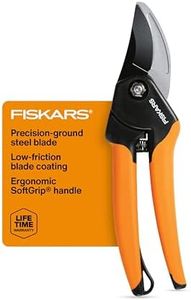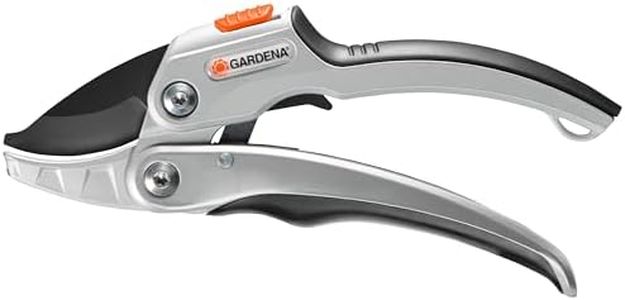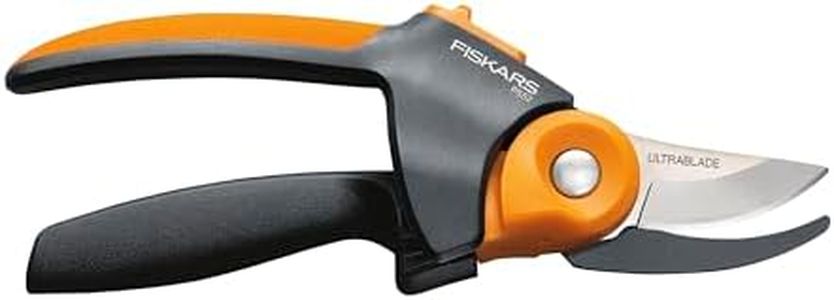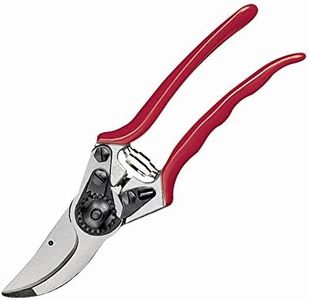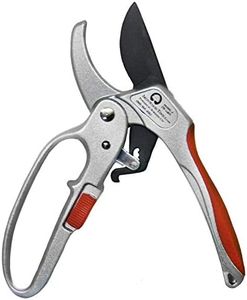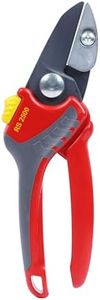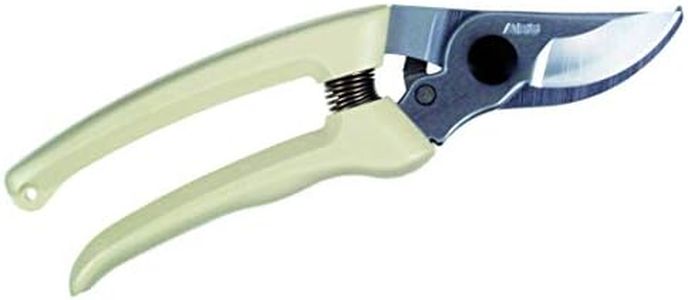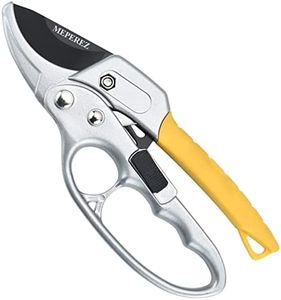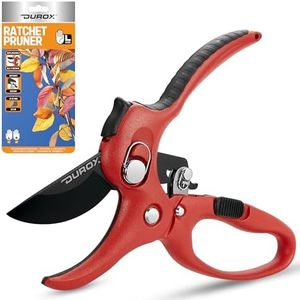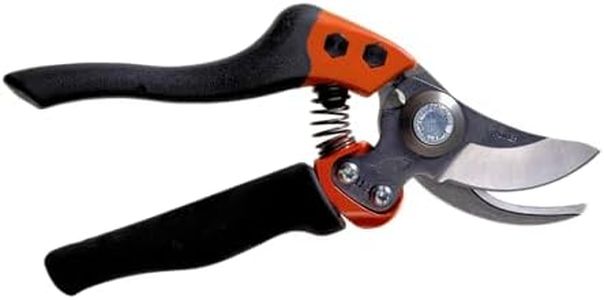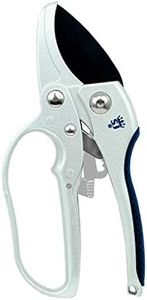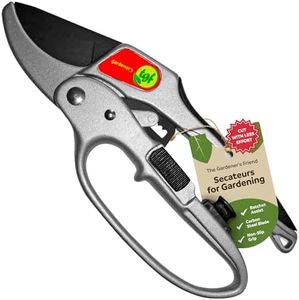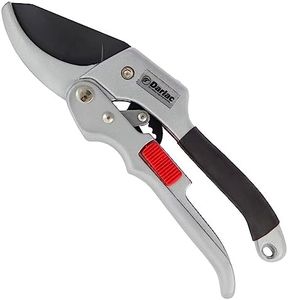We Use CookiesWe use cookies to enhance the security, performance,
functionality and for analytical and promotional activities. By continuing to browse this site you
are agreeing to our privacy policy
10 Best Ratchet Pruner
From leading brands and best sellers available on the web.Buying Guide for the Best Ratchet Pruner
Choosing a ratchet pruner can make your gardening experience much easier, especially if you often work with tough, thick branches or have less hand strength. Ratchet pruners use a mechanism that allows you to cut in stages, reducing the effort required and making cleaner cuts. The most important thing is to find a pruner that feels comfortable, matches your gardening needs, and helps you work efficiently and safely.Blade MaterialBlade material refers to what the cutting part of the pruner is made from, and it affects durability, sharpness, and ease of maintenance. High-carbon steel blades tend to stay sharp longer and handle tougher branches, while stainless steel offers better rust resistance but might need sharpening more frequently. If you'll be cutting hard or thick branches regularly, a tougher metal like high-carbon steel is better. For lighter, occasional trimming or if you live in a humid area, stainless steel may be ideal for its resistance to rust.
Ratchet MechanismThe ratchet mechanism enables you to make a cut in several squeezes, not all at once. A good ratchet system should engage smoothly and make the process easier, requiring less hand strength. Simple single-stage ratchets are best for quick, thin cuts, while more advanced multi-stage ratchets handle thicker, tougher branches. Choose the complexity based on how often you plan to cut through harder material.
Cutting CapacityCutting capacity tells you how thick a branch the pruner can cut, usually given in millimeters or inches. Smaller capacities (about 1/2 inch) suit light trimming and flower work, while larger capacities (up to 1 inch or slightly more) are needed for mature shrubs and ornamental trees. Match the capacity to the thickness of branches in your garden—too small and you’ll struggle, too large and the tool may be unnecessarily heavy.
Handle Design and GripThe handles determine comfort and control during use. Look for ergonomically designed handles with non-slip materials to prevent blisters and hand fatigue. Shorter handles suit smaller hands or lighter work, while longer or padded handles are better for extended use or greater leverage. Consider if you have hand strength limitations or typically work for long periods when focusing on handle features.
Safety LockA safety lock keeps the blades closed when the pruner isn’t in use, helping to prevent accidental injuries and blade damage. Some locks are easier to engage one-handed than others. If safety is a concern or you’ll store pruners near children or pets, prioritize a reliable and easy-to-use safety lock.
WeightWeight affects how long you can use the pruner comfortably. Lightweight pruners are easier to handle for longer periods or for those with arthritis, but sometimes heavier models offer more durability and cutting power. Choose the weight based on your strength and how long you usually spend pruning.
